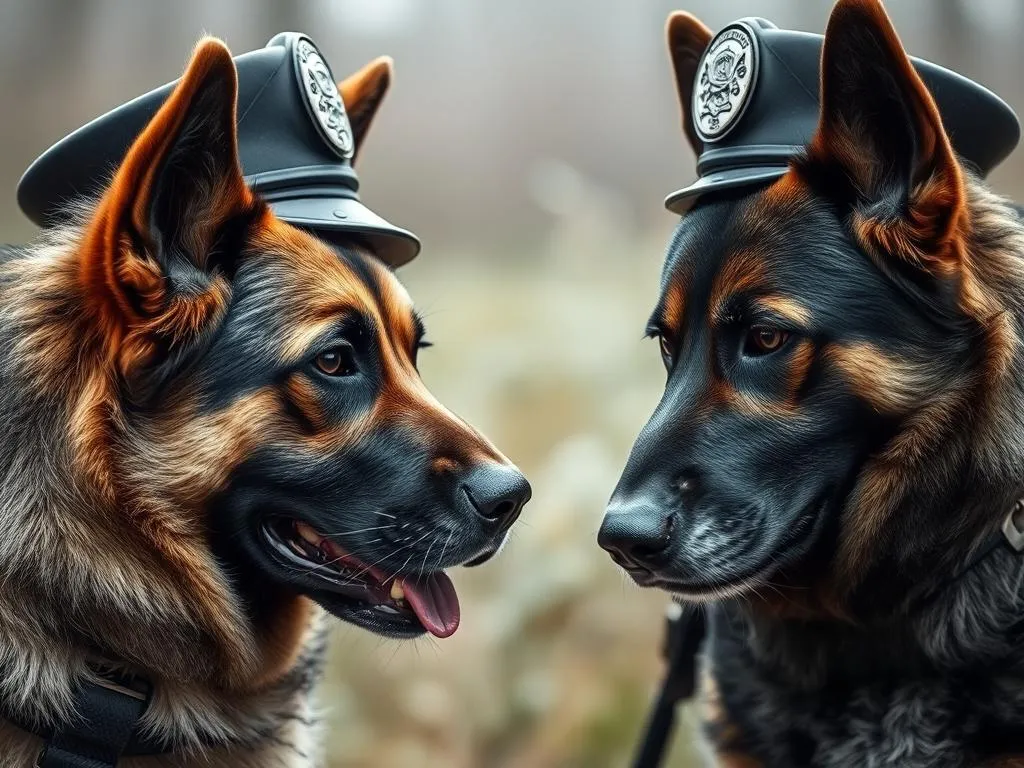
Police dogs have long been an integral part of law enforcement, utilizing their extraordinary sense of smell to aid in various operations. As vaping becomes increasingly popular, concerns have arisen regarding whether these trained canines can detect vapes. Understanding the capabilities of police dogs and the nature of vaping is essential for anyone interested in the intersection of law enforcement and modern smoking alternatives.
Understanding Police Dogs
History and Training
The use of dogs in police work dates back centuries, with their roles evolving significantly over time. Initially employed for tracking and protection, police dogs have transitioned into specialized roles, including narcotics detection, search and rescue, and crowd control. The breeds most commonly utilized in police work, such as German Shepherds, Belgian Malinois, and Labrador Retrievers, are chosen for their intelligence, agility, and, importantly, their keen sense of smell.
Training for police dogs is rigorous and extensive. They undergo basic obedience training before progressing to specialized training that hones their ability to detect specific scents. This training often includes exposure to various controlled substances, explosives, and even currency. Each dog typically trains for a specific role, and the training process can take months to complete.
Sensory Capabilities
Dogs possess an extraordinary sense of smell that far surpasses that of humans. While humans have approximately 5 million olfactory receptors, dogs have around 220 million. This remarkable capability enables them to detect scents at incredibly low concentrations, making them invaluable in law enforcement.
Several factors enhance a dog’s olfactory abilities, including their ability to differentiate between multiple scents and their proficiency in following scent trails over long distances. Police dogs are typically trained to detect scents associated with drugs, explosives, and even missing persons, but how does this translate to the scents produced by vaping?
Vaping: The Basics
What is Vaping?
Vaping refers to the act of inhaling vapor produced by an electronic device known as a vape or e-cigarette. Unlike traditional smoking, which involves combustion, vaping utilizes a battery-powered device to heat a liquid (often called e-liquid or vape juice) into a vapor. This process allows users to inhale flavored nicotine or other substances without the harmful byproducts of burning tobacco.
Common Ingredients in E-liquids
E-liquids generally consist of four primary ingredients:
- Propylene Glycol (PG): A colorless and odorless liquid used as a base in e-liquids.
- Vegetable Glycerin (VG): A thicker liquid that provides a smoother throat hit and helps produce vapor.
- Nicotine: The addictive substance found in tobacco, which can be included in varying concentrations.
- Flavoring Agents: These are food-grade flavorings that give e-liquids their distinct tastes, ranging from fruity to dessert-like options.
The composition of e-liquids varies widely, and the presence of these ingredients may influence whether police dogs can detect the vapor produced during vaping.
Do Police Dogs Detect Vapes?
Current Capabilities of Police Dogs
Police dogs are primarily trained to detect specific scents associated with illegal substances, explosives, and other contraband. Their training focuses on identifying the distinct odors of drugs like cocaine, heroin, marijuana, and synthetic substances. While some vapes may contain illegal substances, the ability of police dogs to detect the vapor produced by e-liquids remains a topic of exploration.
Currently, police dogs are not routinely trained to recognize the scents associated with vaping or the specific ingredients found in e-liquids. However, if a vape contains detectable drugs or illicit substances, a well-trained police dog may still alert its handler to the presence of those substances rather than the vape itself.
Factors Influencing Detection
Several factors can influence a police dog’s ability to detect vapes:
-
Types of Vapes: Different vapes release different scents based on their e-liquid composition. For instance, a vape containing tobacco flavoring may emit a smell more recognizable to a police dog than a fruity flavor.
-
Environmental Factors: The environment in which vaping occurs can significantly impact scent detection. Wind, humidity, and temperature can all affect how scents disperse and how easily they can be detected by dogs.
-
Comparison to Other Substances: While dogs are adept at detecting marijuana and tobacco, the scents produced by e-liquids may be less pronounced. Consequently, the efficacy of detection may vary based on the specific substances present in the vape.
Case Studies and Real-World Applications
Instances of Police Dogs Detecting Vapes
There have been isolated reports of police dogs being used to detect vapes, particularly in locations where vaping may be associated with illegal activities. For example, in schools or during traffic stops, police dogs have been deployed to search for illicit substances where vaping may be involved.
One notable case involved a police department that reported success in using dogs trained to detect marijuana to identify individuals who were illegally vaping cannabis products. While these instances are not widespread, they highlight the potential for police dogs to assist in situations where vaping intersects with illegal drug use.
Law Enforcement Training on Vapes
As vaping becomes more prevalent, there is a growing recognition of the need for law enforcement agencies to adapt their training protocols. Some police departments are beginning to explore training options that would allow dogs to detect vaping products, especially those laced with illegal substances.
However, comprehensive training programs specifically focused on vaping detection are still in their infancy, and it remains to be seen how widely they will be adopted.
Public Perception and Misconceptions
Myths Surrounding Police Dogs and Vapes
Many misconceptions exist regarding the capabilities of police dogs in relation to vaping. One prevalent myth is that police dogs can detect any vape regardless of its ingredients. In reality, the effectiveness of a police dog in detecting vapes hinges on the specific scents associated with the e-liquids being used.
Another common misconception is that all police dogs are trained to detect the same substances. In truth, each dog undergoes specialized training tailored to their assigned role, meaning that not all dogs will have the same detection capabilities.
Public Awareness and Education
Educating the public about how police dogs work is crucial for demystifying their roles in law enforcement. Understanding the limitations of police dogs regarding vaping can help dispel myths and foster a more informed dialogue about vaping and its implications.
Moreover, promoting responsible vaping practices can contribute to community safety and compliance with local laws. Encouraging awareness of the potential legal ramifications of vaping, particularly in public spaces, can help individuals make better-informed choices.
Future of Police Dogs and Vaping Detection
Technological Advances
As technology continues to evolve, new tools may emerge to assist in scent detection alongside the capabilities of police dogs. Devices that can analyze air samples for specific compounds could complement the abilities of trained canines, providing law enforcement with additional resources to address vaping-related concerns.
These advancements could be particularly beneficial in settings where vaping is prohibited, allowing law enforcement to effectively monitor compliance and maintain public safety.
Evolving Training Protocols
Looking ahead, it is likely that training protocols for police dogs will evolve to address the growing trend of vaping. As law enforcement agencies recognize the need to adapt to new substances and trends, training programs may begin to incorporate elements focused on vaping detection.
This adaptation will be crucial for ensuring that police dogs remain effective in their roles as society’s needs change. The ability to detect vapes, especially those containing illegal substances, will become increasingly important in maintaining public safety.
Conclusion
In summary, while police dogs are equipped with exceptional sensory capabilities, their ability to detect vapes is still being explored. Although they are not currently trained to recognize the specific scents associated with vaping, they can detect illegal substances present in some e-liquids. As vaping continues to rise in popularity, adaptations in training protocols and the integration of technology may enhance the capabilities of police dogs in this area.
Understanding the dynamics between police dogs and vaping is essential for fostering public awareness and education. As the landscape of law enforcement continues to evolve, so too must the training and resources available to ensure effective responses to emerging challenges in society.









